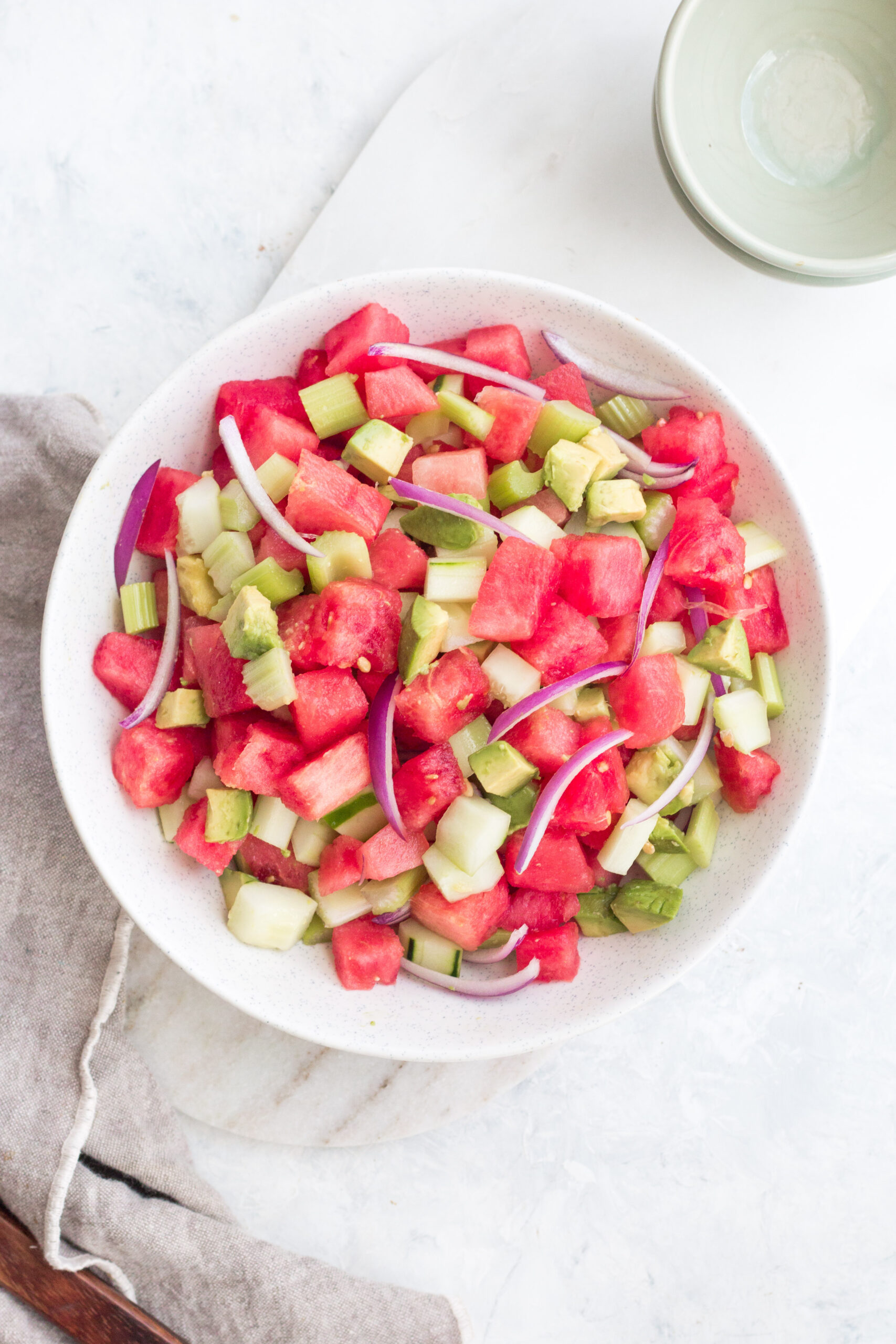
For years, I battled a relentless enemy – chronic pain stemming from Irritable Bowel Syndrome (IBS). It began subtly, with bloating, belching, and a dull ache that transformed food from sustenance to foe.
Consumed by the quest to identify the culprit, I embarked on a cycle of elimination and reintroduction, desperately searching for the dietary trigger. Gluten and dairy were quickly banished, but the pain persisted, a stubborn shadow regardless of what I ate.
Many days began tangled in a web of physical and mental anguish. Simple meals like bone broth or cooked vegetables could trigger a cascade of pain lasting for hours. The constant fear of these episodes took a toll on my well-being, a vicious cycle fueled by worry and elevated cortisol levels.
Fifteen years of this exhausting battle led me on a quest for answers beyond the realm of food. Acupuncturists, herbologists, chi nei tsang practitioners, and spiritual gurus – I sought solace and guidance wherever it might be found. Intuition whispered that the root cause wasn’t solely dietary; the undeniable impact of early childhood trauma, PTSD, the near-death experiences of my children, and a life-altering divorce all pointed towards a deeper, more holistic answer.
Then, a breakthrough arrived. A local energy healer shed light on a hidden culprit – my fascia. The article below, featuring fascia expert Lauren Roxburgh, delves into the science of fascia and its profound role in chronic pain. It resonated deeply with my experience, offering a compelling explanation for how emotional trauma, inflammation, and physical strain can all manifest in the fascial web of our bodies.

Lauren Roxburgh
Q: FASCIA, THE CONNECTIVE TISSUE UNDER THE SKIN, WASN’T WELL UNDERSTOOD UNTIL QUITE RECENTLY — AND WE’RE STILL JUST LEARNING ABOUT IT. TO START, LET’S TALK ABOUT WHAT FASCIA IS…
A: Fascia is a thin layer of connective tissue that lies under the skin and wraps every muscle and organ in the body. Ever cut into a piece of raw chicken or steak and seen that thin white, filmy layer? That’s fascia. Fascia is like a thin cling wrap-like layer that lies like a webbing between the skin and the muscles. It wraps around the entire body and every individual muscle and organ! It also connects the muscles to the joints and bones.
Fascia is also where our nerves and lymph nodes lie – and is now being referred to as a sensory organ. This is where pain originates and is communicated to the brain.
Western medicine has only recently begun to recognize the role of fascia in the body, which is why terms like “myofascial release” are now buzzwords in the fitness industry.
In a healthy state, fascia is smooth, flexible and fluid. However, emotional trauma, injuries, inflammation, surgeries, poor posture, repetitive strains or even just the effects of gravity can all cause the fascia to become damaged. Adhesions form within the stuck and blocked fascial tissue like snags in a sweater, making our bodies feel heavy, brittle and run down. Think of a sponge that has dried up and gotten brittle and stiff. Add water (hydration) to the sponge and it becomes supple, flexible and essentially more ‘youthful’ again.
Our fascia has self-healing abilities. When you get your body and mind into correct alignment and restore and hydrate your fascia, you will build healthier tone in the body, grow up to an inch in height and release stress from your system.
Q: LET’S TALK ABOUT THE CONNECTION BETWEEN FASCIA AND EMOTIONS. HOW DO OUR BODIES “STORE” TRAUMA AND EMOTIONS?
A: My private practice involves working with some of the top orthopedic surgeons in the world and many professional athletes, who tend to be very ‘Western’ in their approach to medicine and wellness.
I have studied a wide range of modalities and integrated the best of each into my approach. What we are talking about here verges more into the Eastern tradition that is not studied in Western medical schools, but has been around since ancient times. Eastern medicine has more to do with the flow of energy or ‘chi’ in the body.
Genetics, lifestyle, accidents and trauma all play a part in our issues and ailments, but our emotional state can have a huge impact on our health, weight and well-being as well.
Emotions and fascia are closely connected. I’ll give you an example: imagine you nearly get into a car accident or you have a confrontation at work. These triggers cause you to feel stressed and emotional. Your nervous system goes into a ‘fight or flight’ response and your body tends to tighten up and clench in response. Remember how I explained that the nerves lie in the fascia? This means you are actually holding that emotional stress and tension within your fascia resulting in tightness and blockages in the fascial matrix. When you’re in this ‘fight or flight’ state, a doctor of Chinese medicine would say your ‘chi is blocked’. When your chi is blocked there is inflammation, which leads to stagnation – a feeling of heaviness that can lead to dis-ease and or illness.
In the Eastern tradition, specific emotions are associated with specific parts of the body, as well as their corresponding chakras.
For example, the root chakra – which is basically situated in the pelvic floor – is an area where fear around financial concerns or providing for your family are said to be stored. These emotions often manifest as back pain, because a tight, over-clutched or blocked pelvic floor will cause the back to be pulled out of alignment.
Q: INCREDIBLE. AND WHAT IS THE RELATIONSHIP BETWEEN THE FASCIA AND THE LYMPH SYSTEM?
A: Since the fascia is where the lymph nodes and nerves lie, the health of your fascia affects the functioning of the lymph system. Lymph is the body’s ‘garbage disposal’, filtering out toxins in a way that is vital for immunity, optimal health and weight loss. Fascia needs to be supple, hydrated and flexible to properly move the lymph and flush the body of toxins.
When fascia loses its suppleness and resilience or dries up and gets thick and tight, this pulls the body out of alignment, compresses the organs and lungs which decreases the effectiveness of our breathing and restricts the lymph which allows toxins and tension to be trapped in the system. Keeping your fascia healthy and malleable is key for flushing waste from the body.
Q: FASCIA PLAYS A HUGE ROLE IN OUR BODY SHAPE. WOULD YOU EXPLAIN THAT A BIT MORE?
A: Fascia is a newly recognized ‘shape shifting’ system in the body. Fascia is malleable and thin, but it’s important because it is largely responsible for the structural integrity of our bodies.
It has a vital impact on posture. For example, if you hunch over at your computer all day, your fascia gets ‘glued’ into this shape and you’ll find yourself in a permanent hunch. Similarly we’re all affected by the inexorable downward pull of gravity and again our fascia can get ‘stuck’ in the resulting slump.
The good news is that you can heal your fascia. Most of my clients find they stand half an inch to an inch taller once we’ve healed their fascia and they’ve regained their correct posture. Standing taller helps you look slimmer and feel better, all of which makes you look younger! Hence the name of my book and video course, ‘ .
Q: TALK TO US ABOUT FOAM ROLLING. IT’S NOT THE KIND OF STRENUOUS WORKOUT MOST OF US THINK OF AS SLIMMING OR STRENGTHENING, BUT YOU CAN FEEL THE RESULTS RIGHT AWAY…
A: The foam roller is the ideal tool to help you heal and hydrate your fascia. The easiest way to explain how rolling works is to think about a rolling pin rolling out dough. When you put weight on the foam roller, the pressure you feel as you move over the roller is working your tissue, smoothing it out and wringing out toxins and scar tissue that build up in the fascia. This also helps to oxygenate the blood, ‘lubricating’ the joints and reducing inflammation in the body, all while increasing flexibility and range of motion. Rolling can improve the connection to core muscles which tend to lose connectivity as we age and it helps to flush the lymphatic system.
Many people have seen foam rollers lying around their gym and the common misconception is that they are just something runners use to roll out tight hamstrings. But the foam roller can be so much more than that. I’ve spent years developing moves on the roller that effectively mimic many of the exercises in Pilates that require large and expensive equipment like a Reformer or a Cadillac. Like Pilates, you can use the roller to get a full body workout that really activates and works the intrinsic and core muscles. It might not be a cardio workout per se, but trust me when I say you’ll get a sweat on if you follow my roller workouts!
People often ask me which foam roller I recommend. Any medium density roller will work as long as it’s not painful for you. But many people use rollers that are too hard and painful so I developed my own roller, the LoRox Aligned roller, that I researched until I found a foam that is the perfect density for almost everyone.
Q: WHAT SHOULD PEOPLE EXPECT TO EXPERIENCE AFTER A FEW OF YOUR ROLLING WORKOUTS?
A: The feedback and transformations from the ten-week program I’ve been seeing from clients all over the world has really blown me away. I’m sharing many before and afters on my site because I’ve been really impressed – some of them are just short of miraculous.
My favorite rolling benefits are:
+ reaching deep core muscles
+ the convenience and portability of foam rolling anywhere
+ calming of the nervous system, including the reduction of cortisol
+ the lengthening effect of the workout that usually creates half an inch of extra height
+ increasing the production of oxytocin (the happy hormone)!
+ flushing of the lymphatic system for detox and a good glow
The beauty of the 10-week program is this: the workouts are simple to execute, but build long, lean and strong tone in the entire body — likely in places you haven’t worked in years. The roller effectively reaches areas like the deep core, back of the arms, upper back and pelvic floor.
The latest science also shows that rolling calms your nervous system, decreases stress and helps stabilize and reduce the level of cortisol in the body (a.k.a the stress hormone). Research is also showing that rolling helps the body to produce oxytocin – which is the happy hormone! Rolling and rebounding help your body flush toxins by boasting the lymphatic system, which helps you detoxify and glow from the inside out.
Q: NOW THAT WE KNOW A LITTLE ABOUT THE FASCIA, HOW CAN WE BETTER CARE FOR OUR PHYSICAL AND EMOTIONAL HEALTH?
A: My number one way of looking after your fascia is to use the foam roller, but I have a whole host of things in the program that will help heal and restore your fascia, your body, and help you lead a more chill and happy life…
Mindful Posture: Become more accountable for your own posture, thoughts, emotions, feelings, beliefs and movement patterns in daily life.
Hydration: I like to start each day with a large glass of alkaline water with the juice of half a lemon. This helps to alkalize the body which is important as many foods such as sugars, processed foods, grains and drinks like coffee or sodas are can push our bodies to being in a more acidic and inflamed state. And, during the day, keep up the water intake – I carry a bottle of alkaline water with me throughout the day. Keeping well hydrated is a great way to flush toxins and keep your fascia healthy.
Proper Breathing: Taking conscious, slow diaphragmatic full inhales and exhales has been proven to increase alpha waves in the brain, which helps us become more alert, calm our bodies and minds, and helps release stress. It even warms up our tissues to reduce fascial restrictions.
Dry Brushing: Dry brushing is a great way to stimulate the lymphatic system and flush you fascia build up.
Dry brushing invigorates the skin and gets the circulation moving which in turn stimulates the flow of lymphatic fluid. This fluid is what collects the toxins our cells produce and transports them to the blood so they can be eliminated. So, getting your lymphatic system moving efficiently is a great way to promote detoxification.
It also helps reduce cellulite and gets rid of dead skin cells. Ideally, you dry brush before you work out for 3-5 minutes because it opens up the pores so you can sweat out toxins more efficiently. It’s pretty simple – basically you dry brush towards your heart. So if you are dry brushing your legs, work your way up with each stroke towards your torso.
Rebounding: Aside from rolling I’m a huge fan of rebounding which not only is one of the most efficient (and low impact) ways to get a cardio workout but the bouncing actually helps you mobilize toxins, build tone in the pelvic floor and flush fat. My favorite rebounder hand down is the Bellicon which is the highest quality with foldable legs for easy storage.
Magnesium Salt Baths: Magnesium is present in over 300 enzyme systems in the human body, regulating blood pressure, synthesizing proteins, and monitoring muscle and nerve functions – but it’s been estimated that up to 80% of people are deficient in magnesium. Incorporating magnesium into your everyday health routine can help alleviate all kinds of ailments from chronic pain to insomnia and even skin conditions.
Because the skin is the body’s largest organ it has an amazing ability to absorb, filter toxins, and deliver nutrients to the body. This means adding magnesium salts to your bath is a great way for your skin to absorb that much-needed magnesium. It also has the added benefit of promoting detoxification because toxins that are not completely removed by the liver may be eliminated through our skin via our sweat, and the magnesium helps draw them out. If you can, I recommend having a bath with magnesium salts 3 times a week before bed. Simply put a spoonful in your bath and if you want really want to pamper yourself, add a scented candle and some soothing music.
Magnesium Supplements: The other way to top up on that magnesium is to take a magnesium supplement. Not only does this supplement help boost your magnesium levels, it also helps calm your nervous system, some call it a natural muscle relaxer which is amazing to help release stress and allow your fascia to let go a bit.
Sleep + Stretch: Keep your fascia healthy by ensuring that you get a good night’s sleep, by stretching, or by doing yoga.
Eat ‘Fascia Foods’: Eat what I call ‘Fascia Foods’. These are foods like bone broth for its amino acids, citrus and peppers for their high vitamin C content and high fiber chia seeds for gut health – all of which will help heal you fascia.


Share this blog post
You may also like
Tick Bites: The Perils Of Delayed Detection of Lyme Disease and How Timing is Key

Beneath the Tap: Unmasking the Dangers of Lead Lurking in Our Water Supply

Hidden Factors Affecting Blood Sugar Balance

Golden Glow Essentials: Holiday Gifts for Mind, Body, and Soul

Everyday Sources of Heavy Metals & What You Can Do

Beach Bod on the Go!

